Index


Review: You won’t go wrong with the PowerColor PCS+ R9 270X 2GB
PowerColor was kind enough to offer consumers a wide range of R9 270X with four different coolers, and today we’ll be looking at one of them, the PCS+ R9 270X. This is perhaps the most interesting card in the company’s 270X lineup. The PCS+ cooler promises excellent performance, the GPU is factory overclocked at the price/performance ratio is still good. For those who want an even more premium product, PowerColor also has the Devil R9 270X. The full name of the card is PowerColor PCS+ R9 270X 2GB GDDR5, or Part Number: AXR9 270X 2GBD5-PPDHE.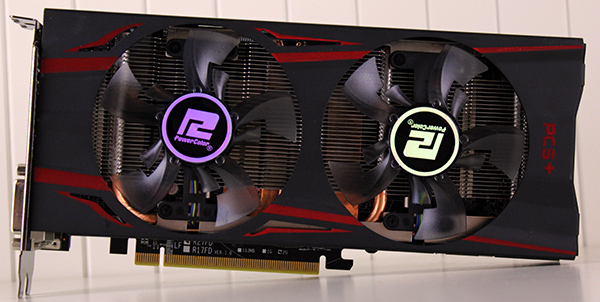
In terms of specifications, the R9 270X is identical to the Radeon HD 7870 GHz Edition. The only exception is the updated display controller hardware. New R9-series cards have better support for multiple displays than old HD 7000-series products. If you are planning to use a three-monitor setup, you no longer have to use DisplayPort for the third display. You can use two DVIs and an HDMI connector.
The R9 270X (and the old HD 7870) are based on 28nm Pitcairn silicon, now known under a new name as Curacao. It features 1280 stream processors, 80 texture memory units (TMUs), 32 raster operations units (ROPs), and a 256-bit wide GDDR5 memory interface backed by 2GB of GDDR5 memory.
AMD partners had a lot of time to get acquainted with the HD 7870, which allowed them to develop even better custom coolers for the 270X. PowerColor is no exception and we are pleased to confirm that the PCS+ R9 270X runs silently under full load.
PowerColor PCS+ R9-270X comes factory overclocked. The GPU clock is raised by 50MHz and the memory by 25MHz (effectively 100MHz GDDR5).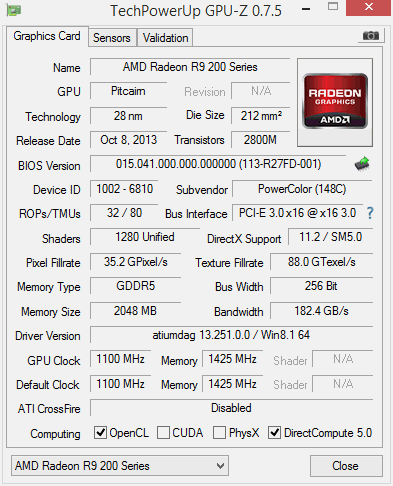
The PCS+ R9 270X box looks nice. At the rear you’ll find some basic info about the components and the cooler, which make it clear that this is not a reference card. However we would like to see at least one image of the actual card on the packaging.

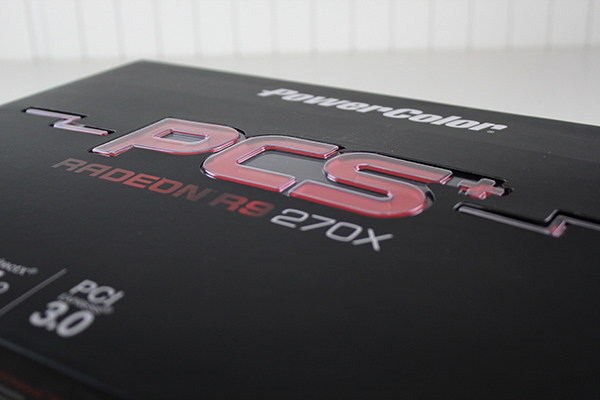
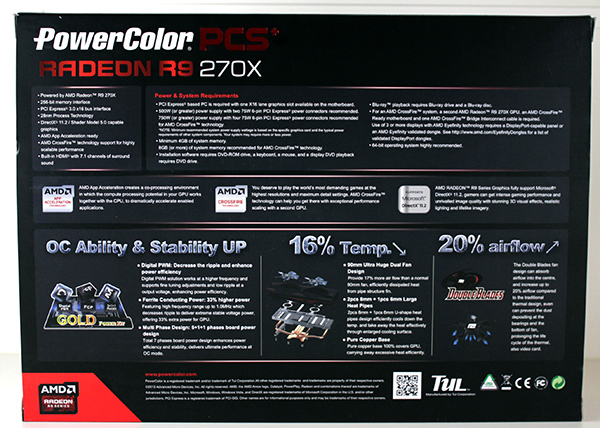
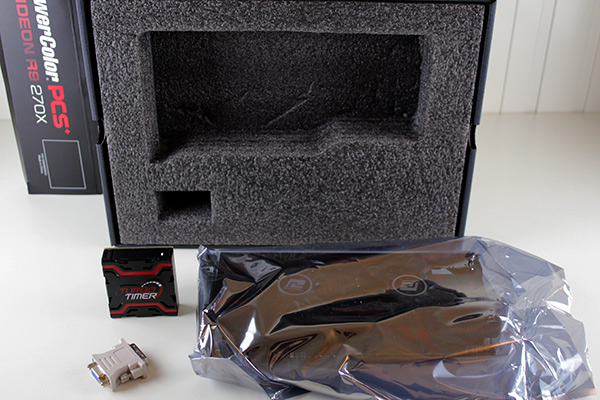
In the box you’ll find:
- Quick Installation Guide
-Driver DVD
- DVI to VGA dongle
- "TurboTimer"
The PCS+ R9 270X looks promising and once you pick it up it feels even better because the shroud and the backplate are metal. That also makes the card rather heavy, but since it is still a mid-range product it’s not too bulky or too heavy. It measures 240mm x 111mm x 38mm. 
The top of the card is also quite attractive thanks to the differently shaped shroud in red and black.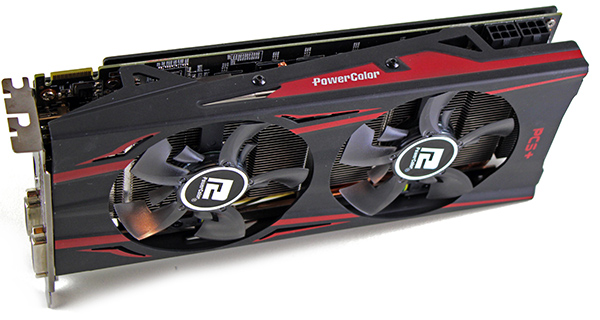
The shroud is opened on all sides and the openings serve as exhaust vents.
The R9 270X needs two 6-pin power cables for normal operation. According to AMD the R9 270X will draw a maximum of 180 Watts.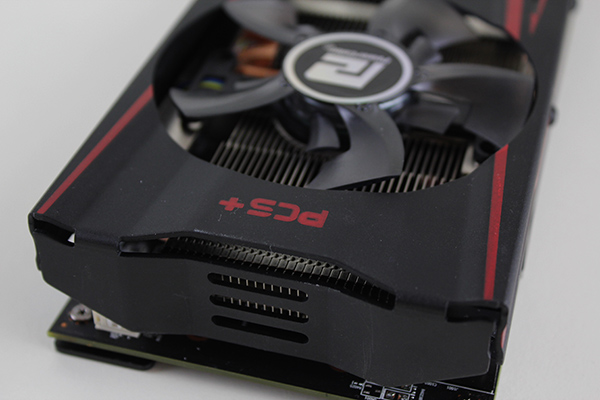
The dual slot cooler uses two 8.5cm fans and the double bladed fans look rather unusual. PowerColor claims the double-blade design can focus airflow into the center and increase airflow by up to 20 percent compared to traditional designs. The design is also supposed to prevent dust from depositing at the bottom. 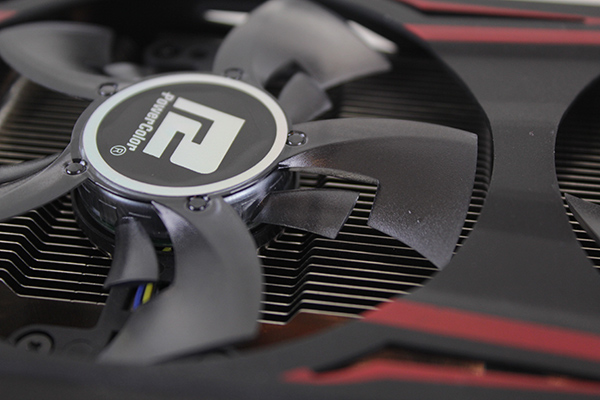
We can confirm that the fans and the heatsink do a good job at keeping the GPU cool. We did not record fan speeds over 1700RPM and at the same time the GPU temperature never exceeded 71 degrees Celsius. You can see the double bladed design in a bit more detail on the next couple of pics.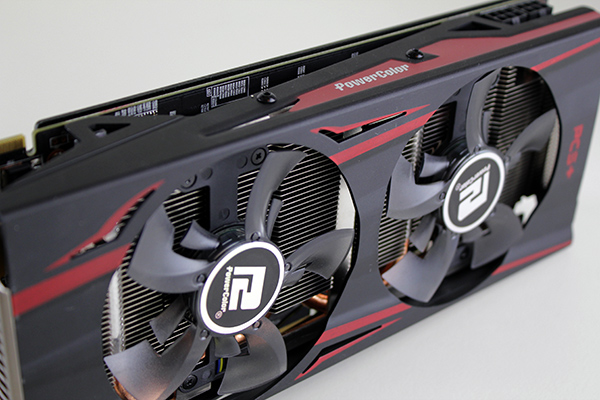
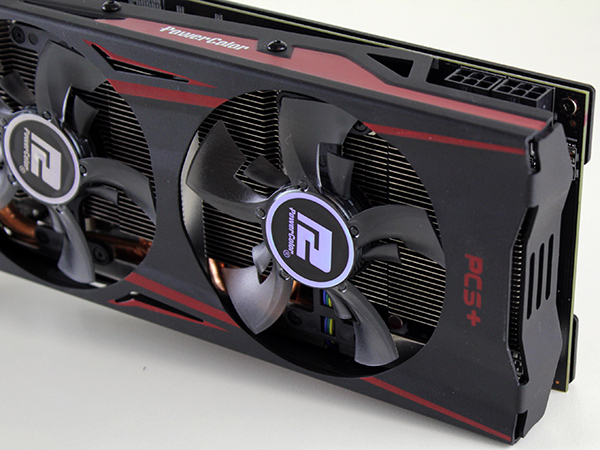
We would still advise users to clean the heatsink on a regular basis. Luckily that is easy to do. You can remove the fans simply by undoing four screws that keep them attached to the heatsink. There is no need to remove the entire cooler.

Here you can see the heatsink and we assure you that PowerColor did not cut any corners. Everything feels solid and very precise indeed.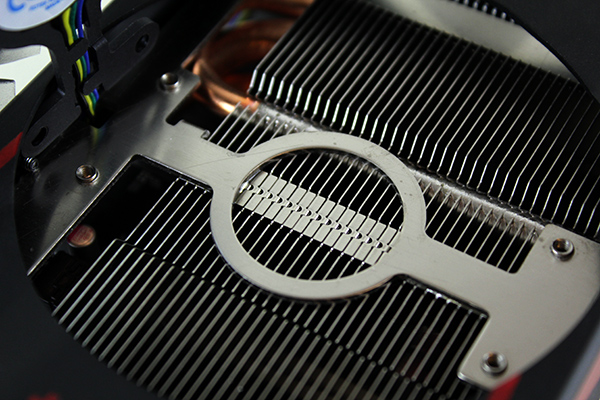
If you were wondering what the “Turbo Timer” sticker is all about, it is a rather simple gadget powered by pins located at the back of the card.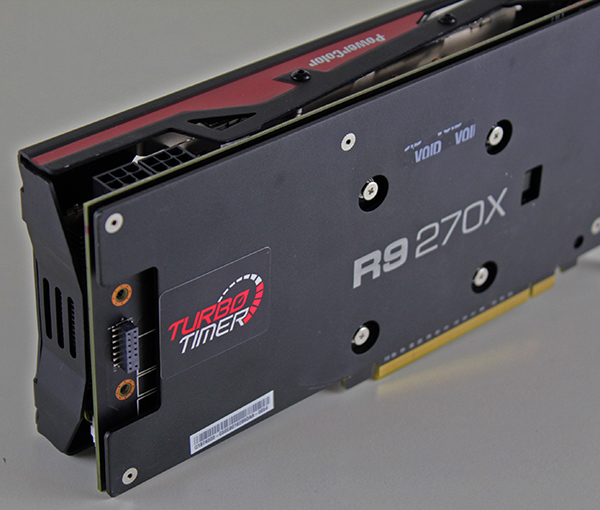
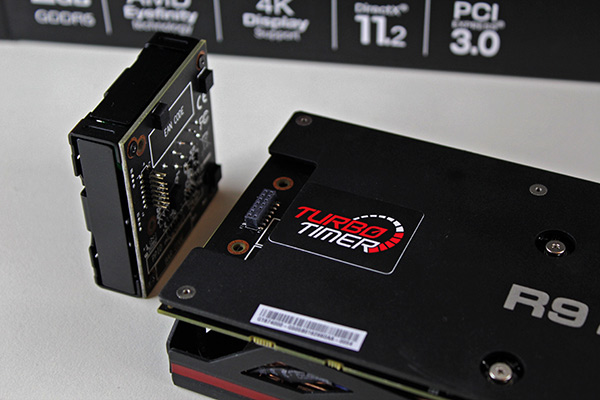
The "TurboTimer" is actually full of capacitors and it is supposed to cool the card even after you shut down your PC. This is supposed to cool key components a bit faster, extending their lifespan. It is an interesting idea, especially if you tend to switch off your PC as soon as you are done gaming (e.g. if you are night owl and do your gaming before going to bed).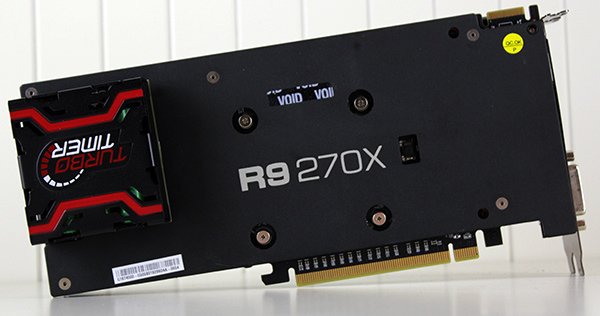
TurboTimer keeps the fans running for 30 to 50 seconds after shutdown, which doesn’t sound like much but it’s better than nothing. The location of the Turbo Timer shouldn’t interfere with other components, especially if the card is placed in the first PCIe slot.
On the I/O panel you will find two mini-DisplayPort connectors, one standard HDMI connector and two DVI connectors (one dual-link DVI and one single-link DVI). Next generation 4K (4096x2160) and UHD (3840x2160) resolutions are supported. You can also use any combination of display connectors or use four outputs at the same time. One HDMI 1.4a compatible sound device is built in the GPU, which also includes HD audio and Blu-ray 3D movies support.
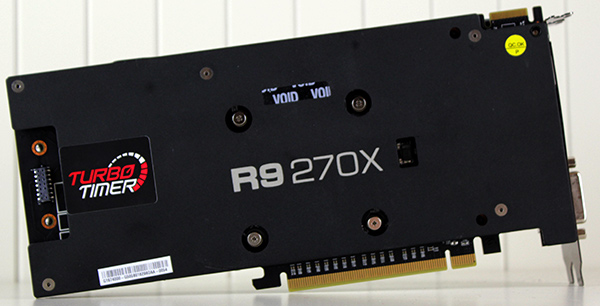
The card has a single Crossfire connector and you can combine it with another R9 270X card or with an old HD 7870 GHz Edition. The PCS+ dual fan design allows air to cool the heatsinks and all components, as well as the PCB itself.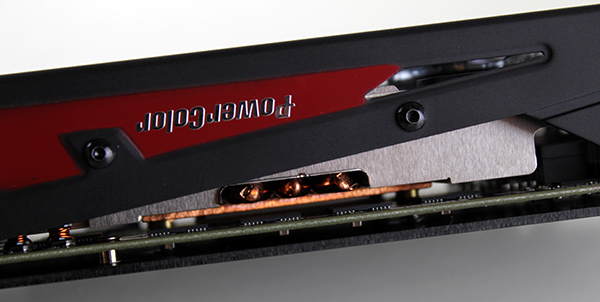
Both fans are connected to the same 4-pin connector on the PCB. Setting the RPM manually is a breeze using AMD’s Overdrive or other utilities like MSI Afterburner or PrecisionX.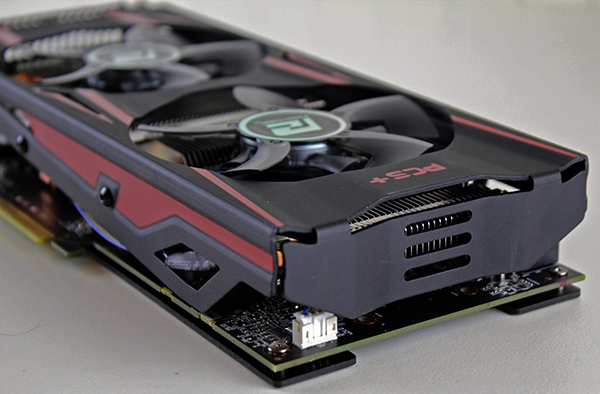
You can remove the metal shroud by undoing four screws as shown on the next image. Note how the fans are not connected to the shroud but to the heatsink itself.
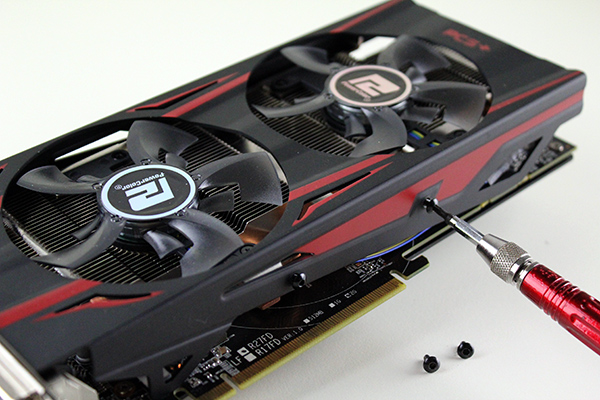
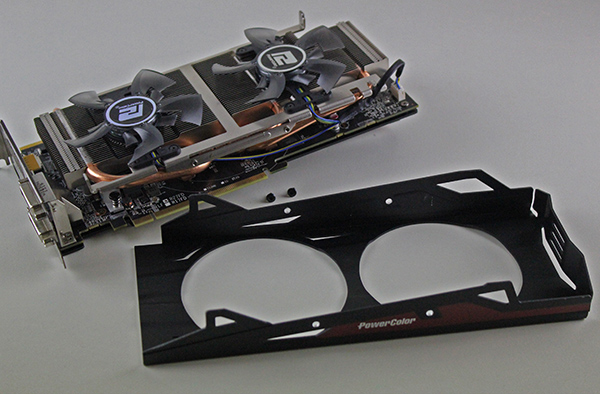
The heatsink is one-piece design and stretches across the entire card. Two 8mm and one 6mm copper heatpipes are employed. All heatpipes are flattened over the GPU, however they are not in direct contact with the GPU. PowerColor uses a big copper base to suck up as much heat as possible. The design is very effective, as our tests will prove.
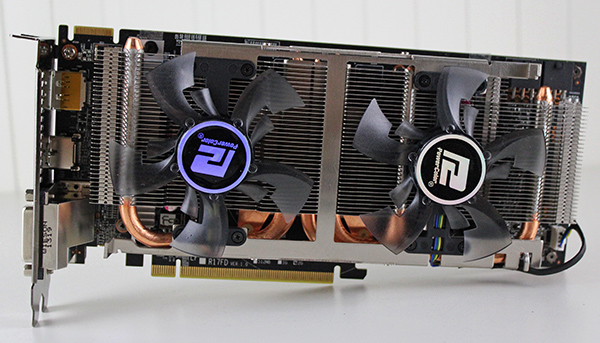
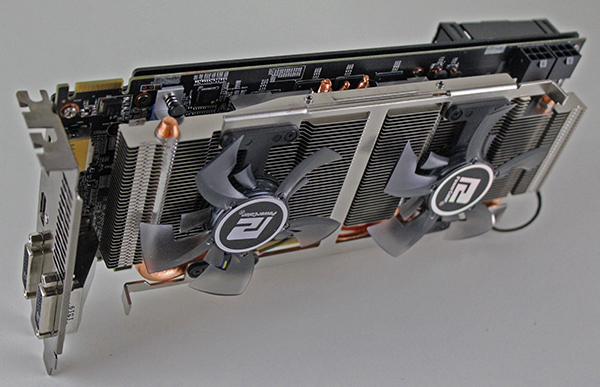
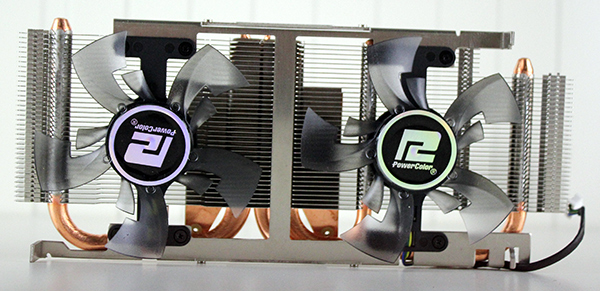
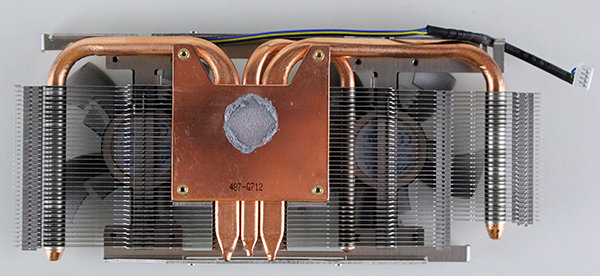
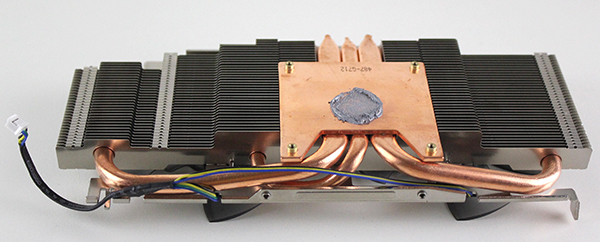
There is also separate heatspreader for the VRM.

The memory chips are cooled only by air. There are eight GDDR5 memory chips for a total of 2GB of memory and they are all installed on the top side of the PCB. PowerColor is using Elpida memory chips, model number W2032BBBG-6A-F. They are specified to run at 1500 MHz (6000 MHz GDDR5 effective).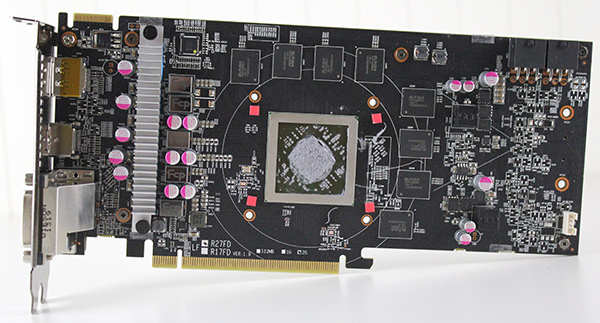
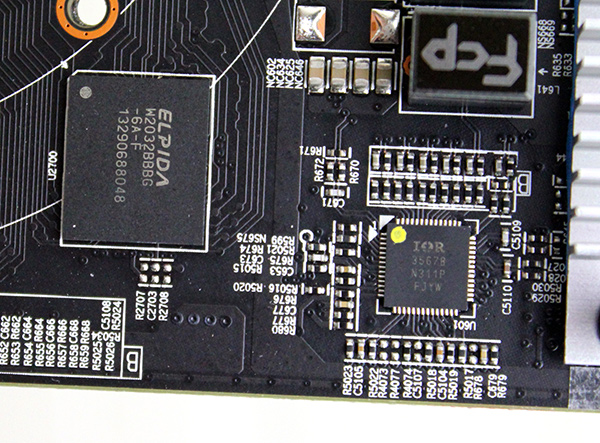
The PCS+ R9 270X uses an International Rectifier IR3567B voltage controller. It is a rather popular choice on recent cards and it offers software voltage control and monitoring via I2C.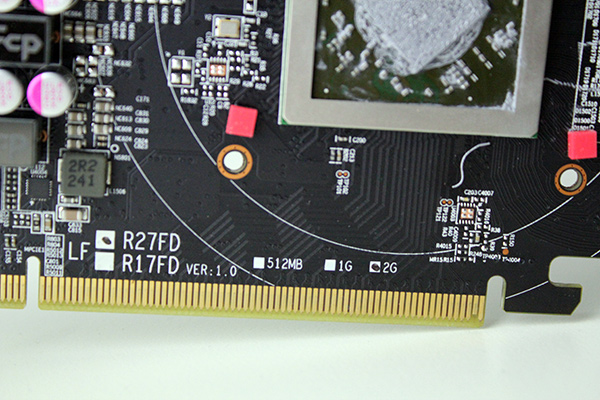
The PowerColor PCS+ R9 270X is capable of delivering smooth game play on 1920x1080 displays. Furthermore you can enjoy maxed out details at 1080p, except in some demanding titles like Crysis 3. Overall the card delivers excellent performance. PCS+ cooling is good and even under load the GPU clock stays clocked at 1100MHz. 
Radeons based on the new Hawaii chip are susceptible to GPU clock variations at higher temperatures and we advise anyone who is interested in picking up an R9 290X or R9 290 to invest in a non-reference card. PowerColor has two non-reference Hawaii cards, a water cooled version and an air-cooled model with a triple-fan cooler.
There are practically no reference 270X cards, so we pitted the PCS+ against the XFX DD R9 279X 1050M card, which is reference clocked. 
Testbed:
- Motherboard: Intel DZ87KLT-75K
- CPU: Intel Core i7 4770K, 4x3.5GHz (Haswell)
- CPU Cooler: EVGA
- Memory: 2x4GB Corsair DDR3 2400MHz
- Harddisk: Corsair Neutron GTX 240GB
- Case: CoolerMaster Cosmos II Ultra Tower
- Operating System: Win8.1 64-bit- CPU
Drivers:
- Nvidia GeForce 332.21 WHQL drivers
- AMD 13-12_win7_win8_64_dd_ccc_whql
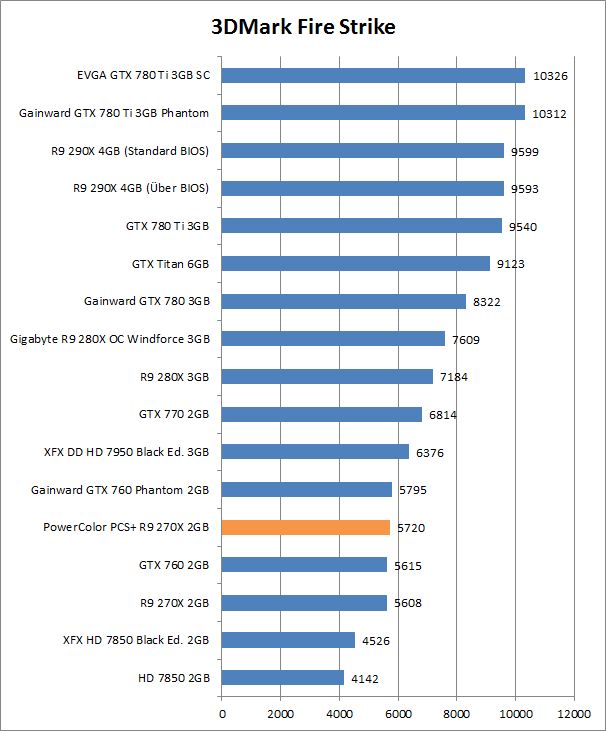
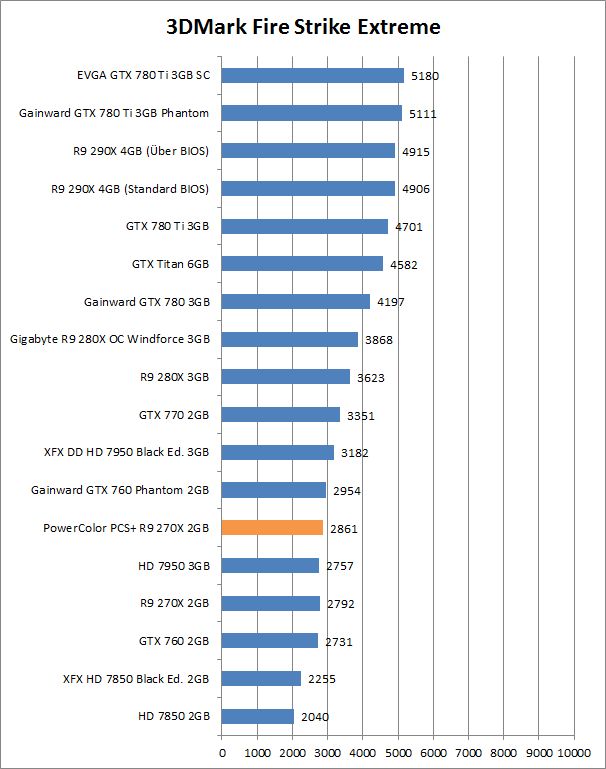
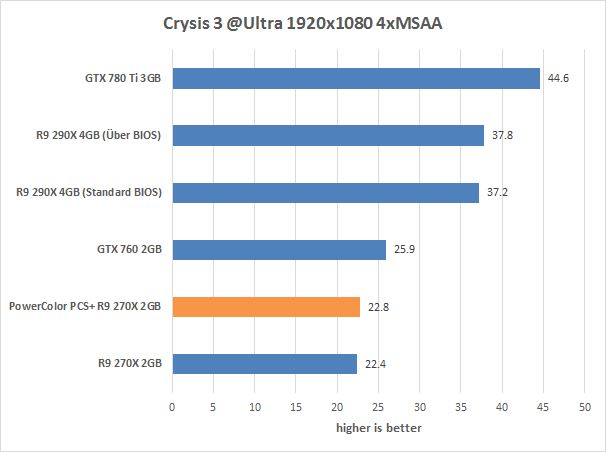
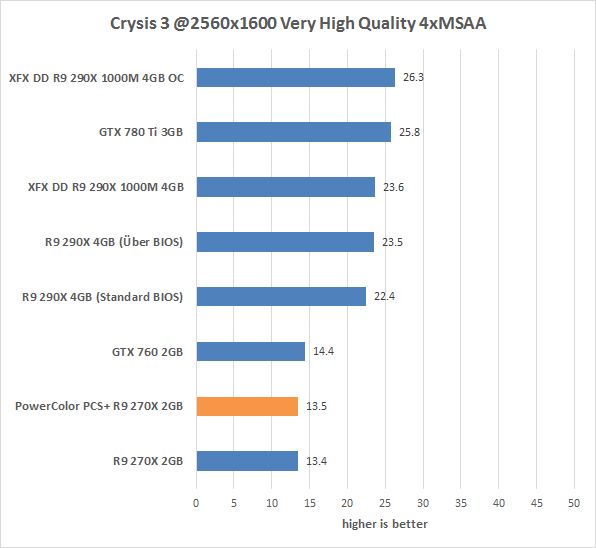
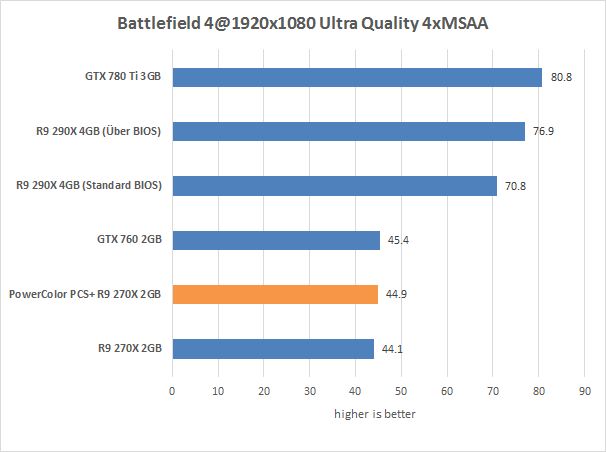
Overall the PowerColor PCS+ R9 270X is a very quiet card. The fans are inaudible in 2D mode, and quiet in 3D mode. Whether you’ll hear it or not depends on the rest of your configuration and the location of your PC. Most users will not notice the card fans because once the game is started and the GPU starts heating up, there are no abrupt fan speed changes. During game play, the fans don’t speed up much. We clocked them at 38 percent, or 1769RPM RPM.
The temperatures are rather low, so if you’re easily annoyed by any even a bit of fan noise, you can adjust the fan curve accordingly. Under load you can afford to slow down the fans and push the GPU temperature higher in order to keep the fans totally silent.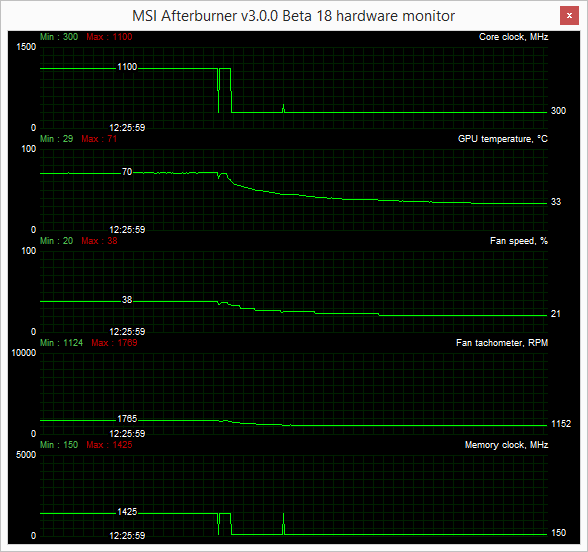
Crysis 3 reading
In the Battlefield 4 we measured about 68 degrees Celsius, and with most demanding games up to 71 degrees Celsius.
We also took a closer look at the Turbo Timer add-on. It is designed to improve longevity by cooling critical components after shutdown. PowerColor’s in-house tests indicate that a GPU heated to 80 degrees Celsius cools down to 63 degrees in a minute from shutdown. With TurboTimer it cools down to 56 degrees. It is not much of a difference but a few components should appreciate the effort.

The modest factory overclock for the core and memory results in slightly increase in power consumption compared to the XFX R9 270X graphics card which works on reference clocks. However there is more room for improvement - AMD cards tend to consume a bit more in multi-monitor mode than Nvidia cards. The difference is about 10W to 15W.

The maximum overclock on our sample card was 1180 MHz for the GPU (12.4% over reference and 7.2% over PSC+ factory clock) and 1550 MHz memory (10.7% over reference and 8.7 over PCS+ factory clock). The GPU overclock is average, in line with what we saw with earlier HD 7870 GHz Edition / R9 270X cards. The memory did not want to play ball after 1550MHz.
This is hardly surprising as we already knew that R9 270X cards don’t have the same overclocking potential as HD 7870 GHz Edition cards because they use slower Elpida memory. We used the default fan and voltage settings as defined in the VGA BIOS. However, a quick Battlefield 4 benchmark showed that overclocking yielded an additional 6-percent performance boost.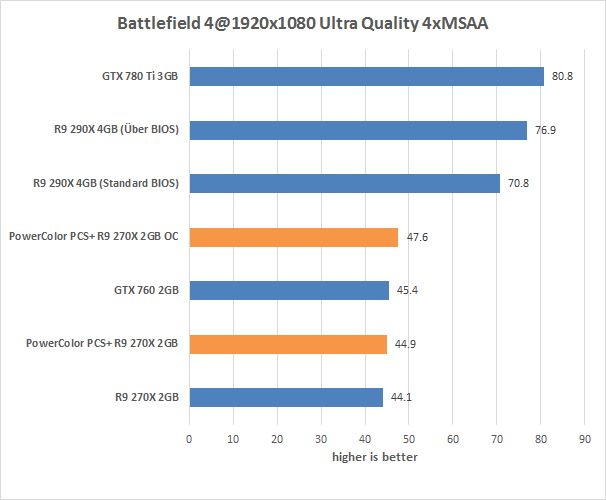
After overclocking we measured up to 74 degrees Celsius, and now finally we could hear the fans clearly, however they were not much of a distraction.
Today we looked at the Power Color PCS+ R9 270X which is available for 171 euro. You pay a 10 euro premium for the quality custom cooler which will not disappoint you if the silence is high on your list of priorities. Practically all partners are selling R9 270X cards at a higher price than the HD 7870 GHz Edition and on average you have to pay 10 to 20 euro more for the “new” R9 270X.
The Radeon HD 7870 GHz launched in early 2012 with a retail price of around 340 euro. At press time the same card can still be found available widely for about 150 euro. In other words, it's a great time for gamers on budget since they can get a 1080p capable card for peanuts.
For those who did not know AMD’s new Radeon R9 270X is identical to the Radeon HD 7870 GHz Edition. That means the R9 270X card is based on the 28 nm "Pitcairn" silicon. The new R9 270X designation is a part of AMD’s rebranding strategy. It is purely strategy. Obviously the HD 7870 is a mature product and AMD wanted to extend the product lifecycle with a name change. However, this is nothing new in the GPU business and we won’t complain too much. The HD 7870 GHz Edition and the R9 270X are still very potent cards and deliver good value for money. The R9 270X does not have True Audio support and it still relies on a hardware CrossFire bridge connector.
However, thanks to the updated display controller hardware the new R9-series cards are a bit better compared to the HD 7000-series when it comes to using multiple displays. Now you can run three-monitor setup, without need for the DisplayPort monitors, because a third monitor can be connected to the HDMI output.
The factory overclock is not high, but it does make the card somewhat faster than reference clocked cards in synthetic tests, but in real life the difference is negligible. We overclocked it by another 6 percent on top of the factory overclock and the difference was still pretty low.
To sum up, you won’t go wrong with the PowerColor PCS+ R9 270X 2GB. This card looks like a good choice for gamers on a budget. The card can easily deliver playable frame rates at 1080p with in-game quality settings at high. The PCS+ cooler looks great and it is very quiet, which is the card’s main selling point.

